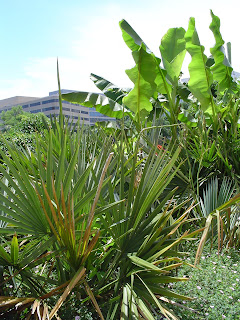
I picked up a 2-gallon Trachycarpus Wagnerianus from ebay from a guy in Georgia. It seems very difficult to find this plant in the United States...but they seem to be for sale all over the place in Europe.
I'm curious to see how it will do in a protected location at my home.
-PolarPalm
This is informatino about this palm from http://coolexotics.com/plant-432-trachycarpus-wagnerianus.html
Trachycarpus wagnerianus miniature Chusan palm, palmier miniature de Chusan |
Trachycarpus wagnerianus is also known as miniature Chusan palm or sometimes simply "waggie". It is a species which is close to the famous Trachycarpus fortunei, the windmill palm. However, Trachycarpus wagnerianus has smaller and stiffer leaves. Unlike what its common name suggests, it is not miniature, as it can reach with age up to 30 ft. (10 m) This species is a slow grower, and is adapted both for containers or gardens. It is very cold hardy, and can withstand frosts down to about 5°F to 0°F. (-15°C to -18°C) This palm has small and very stiff palmate leaves, which are more rounded than these of Trachycarpus fortunei. Leaves are about 20 in (50 cm) wide. Inflorescences appear between the leaves. Flowers are small, dioecious and yellow. Fruits are not edible and are oblong in shape. They turn purple black when ripe. Trachycarpus wagnerianus requiert les expositions suivantes : mi-ombre,lumière These palms need a well-drained but fairly moist soil. |





















